
Learn about all the different facets of musical instrument insurance, including information on how to best protect various instruments, including the guitar, electronic keyboard, violin, saxophone and drums.
** eBook includes coupon codes with discounts on various insurance policies amounting to $125 IN SAVINGS, including $10 in musical instrument insurance policy savings. Coupons valid in Canada only; QC, ON, SK, NB are excluded. **
.jpg?width=600&name=Musical%20Instrument%20Theft_Front%20Row(1).jpg)
Unfortunately, there seems to be an increase in musical instrument theft as of late, but there are some actions you can take to protect yourself and your band.
We’ve provided some tips and tricks for how to guard your instruments, as well as some information on how to insure your instruments so you are protected in any worst case scenario situations.
1. Anonymity
2. Security
3. Parking
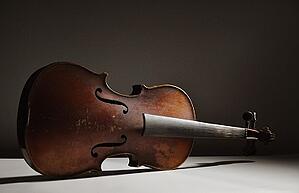 In addition to purchasing professional musical instrument insurance, you can protect your precious instruments by doing the following:
In addition to purchasing professional musical instrument insurance, you can protect your precious instruments by doing the following:
We offer instrument insurance for as low as $75 for $5,000 worth of gear with worldwide coverage and free office contents coverage.
 Insuring your instruments is one way to protect your instruments and gear when flying: what follows are some risk management ideas.
Insuring your instruments is one way to protect your instruments and gear when flying: what follows are some risk management ideas.
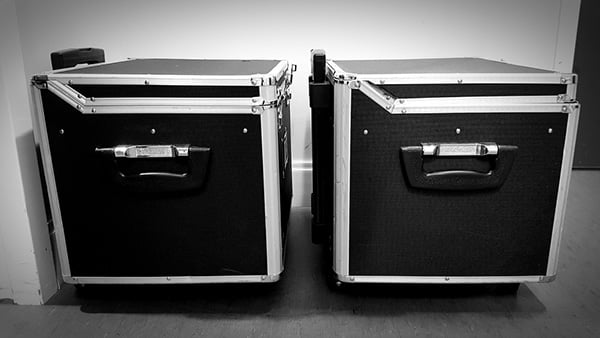
I’m going to give you some tips to protect your instruments and gear when you are on tour. I will also tell you how to insure your gear.
If you are on the road in a van with a trailer or a bus, you have to expect that thieves will assume you have gear worth stealing. Some thieves specifically target touring musicians during load-in and load-out at particular venues.
Know that your valuable gear is being targeted and take proactive steps to protect it. Here are some other ideas to keep it safe:
Summer is almost here! That means the concert touring season is ramping up, hopefully for another record year, as Music Festivals, Music Events, and Touring Artists all hit the road.
A couple of recent stories have reminded me to encourage safety while on the road. No show is worth an injury or bodily harm to anyone involved: Artists, Touring personnel, bus and truck drivers, and patrons! I have attached a couple of stories reporting recent accidents: the Allman Brothers bus crash and an incident following a Luke Bryan concert involving a local crew.
Whether you are producing a one-time concert or a series of musical events in multiple locations, Front Row Insurance Brokers offers musical event insurance programs that cover your events and musical tours and greatly helps to protect your investment.
Take the unfortunate bus crash. Are you prepared for a canceled headliner, to issue refunds if the show cannot be rebooked? Compensate a suitable replacement act? Lost advertising, venue expenses? Medical expenses? Front Row is prepared to help with Musical Event Cancellation Insurance policies that will assist you with these cancellation issues.

Are you making sure that a competent, professional local crew is hired to assist your Touring Professionals? Is safety a priority not only on the job, but have food, liquids, and properly timed “rest breaks” been scheduled. How about giving the local crew rooms that are vacated after a show if necessary if your band and crew have showered. They are paid for: it is a simple process of asking. Not only is that a common, professional courtesy, it helps all involved with a show; Touring Professionals and Locals alike.

“Till those lights come up and we hear that crowd, and we remember why we came”
-Jackson Browne, Stay
Life on the road can be rife with challenges and filled with excitement and exhilaration. But a little insurance planning before heading out on tour will ensure your excitement is from the audience and not an uninsured claim.
In today’s post, I’ll highlight some things for you to think about when planning your tour. While every circumstance is a little different, these are the key exposures that you and production manager will want to consider.
Instruments, Sound, Lighting and Other Equipment: Your instruments and equipment will be loaded, unloaded and then loaded again and again. In order for your insurance coverage to be seamless, you need to ensure that you have a ‘Floater’ coverage form. Floaters are a type of insurance that are not specific to any location, so they extend to wherever the gear is located: on the road, on the stage and everywhere in between. Be sure that the policy territory includes all of the countries where your tour will take you. And, if you are traveling into countries with less stable or unpredictable governments or legal systems, you’ll want to investigate coverage for seizures, quarantine or appropriation by authorities.
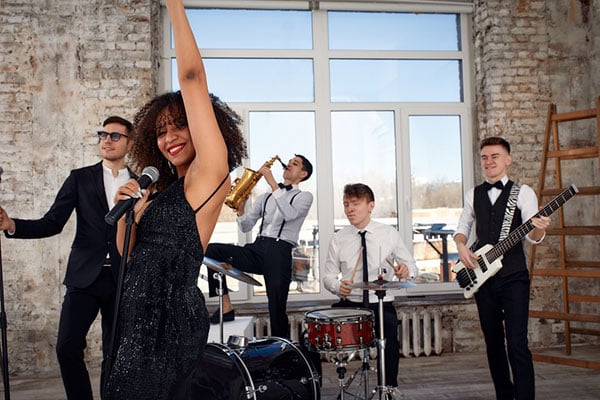
There are a number of reasons why a Cover Band or Tribute Band would benefit from purchasing liability insurance, but perhaps the most compelling reason is because without this cover, the very livelihood of the musician/band is at stake in the event that they are sued. While no one plans on accidents, the chance of such incidents occurring increases at public places and venues where large numbers of people are gathered. When alcohol is consumed, the risk increases even more.
This type of insurance is designed to offer protection against third party (the public) bodily injury or property damage as a result of one’s operations or products.
The relevance to cover/tribute bands is that in the event that bands are held responsible for the injuries and property damage sustained by an audience member or staff member at the venue, the liability insurance would potentially pay for the medical treatment required by the injured party, and can cover settlement claims resulting from lawsuits.
An example of a scenario where a band’s liability policy would be of value include if a member of the audience was invited onto the stage while band members were performing and ended up tripping on loose cords and slamming their face into some audio equipment. The coverage afforded under a liability policy would protect the band (policy holder) in the event that they are then sued by any third parties for unintentional damage. A lawsuit can name a band, its manager, an establishment and its landlord in a lawsuit. Liability insurance protection will not shorten criminal sentences, but it will take care of the resulting injuries and rehabilitation and potentially legal costs as well.
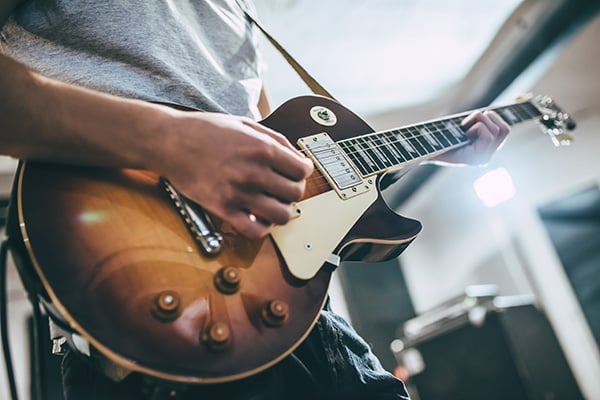
As an entertainment insurance brokerage with a specialty in creating custom insurance packages for musicians, we have seen enough music gear-related insurance claims to be able to speak with some authority on what musicians can do to protect their gear. As it’s one of the most popular instruments, let’s focus on the guitar in this article:

As an entertainment insurance brokerage with a specialty in creating custom insurance packages for musicians, we have seen enough music gear-related insurance claims to be able to speak with some authority on what musicians can do to protect their gear. As it’s one of the most popular instruments, let’s focus on drums in this article:
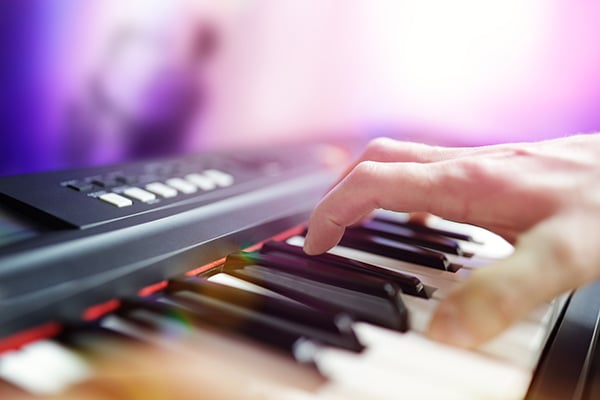
As an entertainment insurance brokerage with a specialty in creating custom insurance packages for musicians, we have seen enough music gear-related insurance claims to be able to speak with some authority on what musicians can do to protect their gear. As it’s one of the most popular instruments, let’s focus on the electronic keyboard/digital piano in this article:
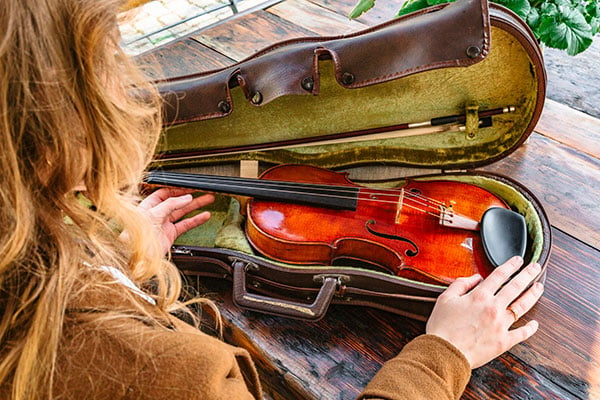
As an entertainment insurance brokerage with a specialty in creating custom insurance packages for musicians, we have seen enough music gear-related insurance claims to be able to speak with some authority on what musicians can do to protect their gear. As it’s one of the most popular instruments, let’s focus on the violin in this article:

As an entertainment insurance brokerage with a specialty in creating custom insurance packages for musicians, we have seen enough music gear-related insurance claims to be able to speak with some authority on what musicians can do to protect their gear. As it’s one of the most popular instruments, let’s focus on the saxophone in this article:
Who should you call first if I have a loss?
Depending on the nature of the incident , or accident, call the authorities needed to assist you in an emergency: the police, the fire department, ambulance or hazardous materials team etc...
Then, call your insurance broker.
Your insurance broker works for you and will present the details of your theft to the insurance company and then they will act as your advocate to ensure that you get paid in full by the insurance company as soon as possible.
An independent insurance broker works for you – not the insurance company.
If you are a Front Row client, please contact one of our offices in Montreal, Toronto, Vancouver or Los Angeles during business hours.
You should be prepared to provide the following information:
I have insurance for my musical instruments and gear. A common question: How will these items be valued if I have a claim?
The instrument policy provides coverage on a replacement cost basis. Replacement Cost provides for the cost to repair or replace the damaged property without deduction for depreciation.
If you have Vintage or one-of-a-kind equipment, coverage can be provided on an Agreed Value, which would be the amount the item has been appraised for by a reputable appraisal company. In order to obtain coverage on this basis, you will need to contact our office to obtain coverage and provide your appraisals. A new appraisal would be required every 5 years.
You arrive back at your van to find the window smashed and your instruments missing. You take out your phone and call your insurance broker to report the claim under the homeowners policy that you purchased. An adjuster is assigned. The claims adjuster does a web search and sees that you have played some small gigs. Because you occasionally perform for money, your gear is now considered “commercial” equipment and as such, not covered by your homeowner’s insurance policy which is intended to cover “personal” musical gear that is not used for commercial purposes. You tell the adjuster that you only played twice in the last 12 months and made less than $300 for the performances. The adjuster shrugs, “It doesn’t matter, even if you busk 10 minutes for $10, you are a professional and your gear is considered commercial and is no longer covered under a homeowners policy”.
This is a difficult, pricey lesson that is better learned before there is a loss. Our experience tells us that many professional musicians assume they are covered by their homeowners insurance policy when in fact they are not.
If you perform for money, check your policy and make sure your coverage is appropriate. At Front Row, we have created a 5-minute online insurance solution.
The policy term is for 12 months and coverage is provided throughout Canada and the USA.
All equipment is covered for replacement cost for theft, damage, fire and loss of use. The online link ensures industry-low prices:
Vancouver, Canada -- September 27, 2013 -- Front Row is pleased to announce a new way for musicians to insure their instruments.
Effective immediately: members of SOCAN, RACS and CCMA will be able to obtain a quote and a policy for their instruments 24 hours a day - 7 days a week by accessing a quote portal created by Front Row especially for musicians. The quote tool has a clean look that is intuitive and simple to use. Worldwide insurance coverage for instruments and gear can be obtained by answering as few as 8 questions on line - no need to talk to a broker. The musician will receive a pdf policy immediately once they pay with a credit card.
There is no minimum premium. To insure $5,000 worth of instruments, the cost is $75. $10,000 costs $125. Fire, theft, breakage are all covered. The site can be accessed here: https://musicians.frontrowinsurance.com/
 "Our volume with the insurance companies gives us a competitive edge when negotiating coverage, premiums and claims settlements for our musical clients," says David Hamilton, President of Front Row based in Vancouver. " We created this tool based on feedback from musicians that wanted to insure their instruments fast, with a minimum of hassle, at a time of day that suited them. We leveraged the 100,000 plus membership so that the program offers the lowest cost insurance for instruments in North America that we are aware of."
"Our volume with the insurance companies gives us a competitive edge when negotiating coverage, premiums and claims settlements for our musical clients," says David Hamilton, President of Front Row based in Vancouver. " We created this tool based on feedback from musicians that wanted to insure their instruments fast, with a minimum of hassle, at a time of day that suited them. We leveraged the 100,000 plus membership so that the program offers the lowest cost insurance for instruments in North America that we are aware of."
Front Row is an independent broker that works on behalf of musicians to transfer the risks of owning musical gear to insurance companies for a premium charge. Should a claim occur, Front Row ensures that the musician receives the money that they are owed per the insurance policy.
Front Row has offices in Montreal, Toronto and Vancouver.
The program offers very low rates and broad coverage.
Cost: $75 for $5,000 worth of instruments. $150 for $10,000. $2,025 for $200,000 of gear. (subject to change)
The insurance policy will cover all of your instruments and gear for a year.
The insurance program will give you a cheque so that you can replace your instruments and gear if they are:
Your instruments will be covered anywhere in the world. You will be covered if your gear is lost or stolen while travelling.
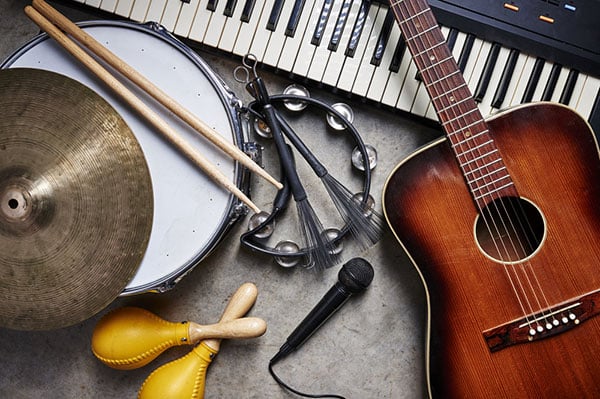
Musical instrument insurance is available from many companies but only a few provide the coverage that professionals require.
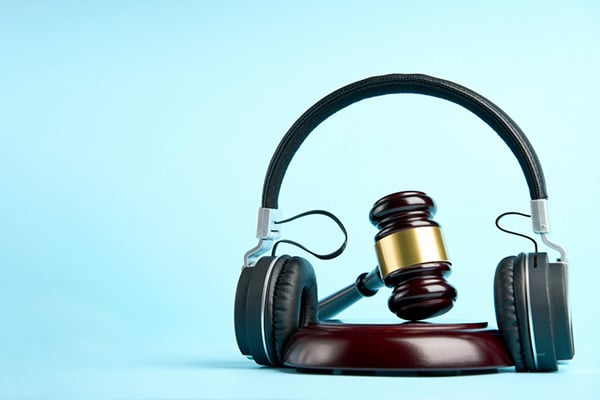
For many years of my life, I have had the pleasure of enjoying three simultaneous careers. I am a senior member of the Bar of British Columbia, Canada focusing on entertainment law, I am a member of the State Bar of California, USA, regularly dealing with my colleagues in Hollywood, and I am a music producer and composer with a current co-write on the radio and a cue on a currently airing TV show. Very rarely does a legal case affect me in all three of my careers at once. The recent music infringement lawsuit between the Marvin Gaye estate vs Robin Thicke and Pharrell Williams over the songs Got to Give It Up (by Gaye) and Blurred Lines (by Thicke/Williams) does exactly this. As a result, I thought it would be interesting to present my commentary from all three of these perspectives, separately.
From the American lawyer’s perspective
The general understanding among attorneys practicing music law in America is that a composition infringes on another when there are substantial similarities between the melodies of one song versus that of another. The precedent setting cases have all generally ruled that similarities in chord progressions and general rhythmic feel – or as some would call it, the “groove” – does not constitute infringement. You need to have melodies that sound alike. In fact, mere similarities in the groove of a song is usually considered a genre. There is no copyright in a genre and there is no copyright in a chord progression.
In comparing Blurred Lines and Got to Give It Up, there is clear evidence that Thicke and Williams meticulously copied the groove of Got to Give It Up. There are also some similarities in the bass line of the two songs, but those similarities do not seem substantial. On a pure legal analysis, it would not seem like this was a case of infringement. However, the case went to a jury, who may have been influenced by the apparent bad attitude and demeanor of Robin Thicke in court. Also, no one in the public has seen the musicologist reports that stated that there was in fact compositional infringement, not just a copying of a feel, groove or genre. Furthermore, jury decisions only decide individual cases based on fact. No reasons are delivered and technically, no legal precedent is set. The message to any disgruntled music creator is that regardless of the existing law and established precedents, if you take an infringement case to a jury, you may still win if you can convince them there was some form of copying, regardless of what aspects were copied and what the legal precedents say to the contrary.
Byron Pascoe: There’s a pretty broad range of types of people and companies who can give consent to have music in film. Approximately 100,000 songs are uploaded to Spotify every day; there’s a lot of music that’s out there. Most music that is created and put out there in the world is created by independent artists who wrote and recorded their own music, and for them, they can give all the consents. They can grant the rights to use the recording and the composition.
If there’s a record label involved, the label may have the right to give permission. If there’s a publisher involved, they may have the right; it really depends on who the creative collaborators are, who the other parties are (if there’s a record label, publisher, one person vs. many people). There’s a lot of music where there’s a lot of people involved. It’s not just co-writers; it’s also producers. Music producers oftentimes own and control a share of a composition. I work for producers, beatmakers, artists, all the different players, and I know from just their way of working together that they’re each composers/writers.
Learn about all the different facets of musical instrument insurance, including information on how to best protect various instruments, including the guitar, electronic keyboard, violin, saxophone and drums.
** eBook includes coupon codes with discounts on various insurance policies amounting to $125 IN SAVINGS, including $10 in musical instrument insurance policy savings. Coupons valid in Canada only; QC, ON, SK, NB are excluded. **
DISCLAIMER: Informational statements regarding insurance coverage are for general description purposes only. These statements do not amend, modify or supplement any insurance policy. Consult the actual policy or your broker for details regarding terms, conditions, coverage, exclusions, products, services and programs which may be available to you. Your eligibility for particular products and services is subject to the final determination of underwriting qualifications and acceptance by the insurance underwriting company providing such products or services. This website does not make any representations that coverage does or does not exist for any particular claim or loss, or type of claim or loss, under any policy. Whether coverage exists or does not exist for any particular claim or loss under any policy depends on the facts and circumstances involved in the claim or loss and all applicable policy wording.
Amazon Associates Disclosure: Front Row Insurance is a participant in the Amazon Services LLC Associates Program, an affiliate advertising program designed to provide a means for sites to earn advertising fees by advertising and linking to Amazon. This post may contain affiliate links. There is no additional cost to you.